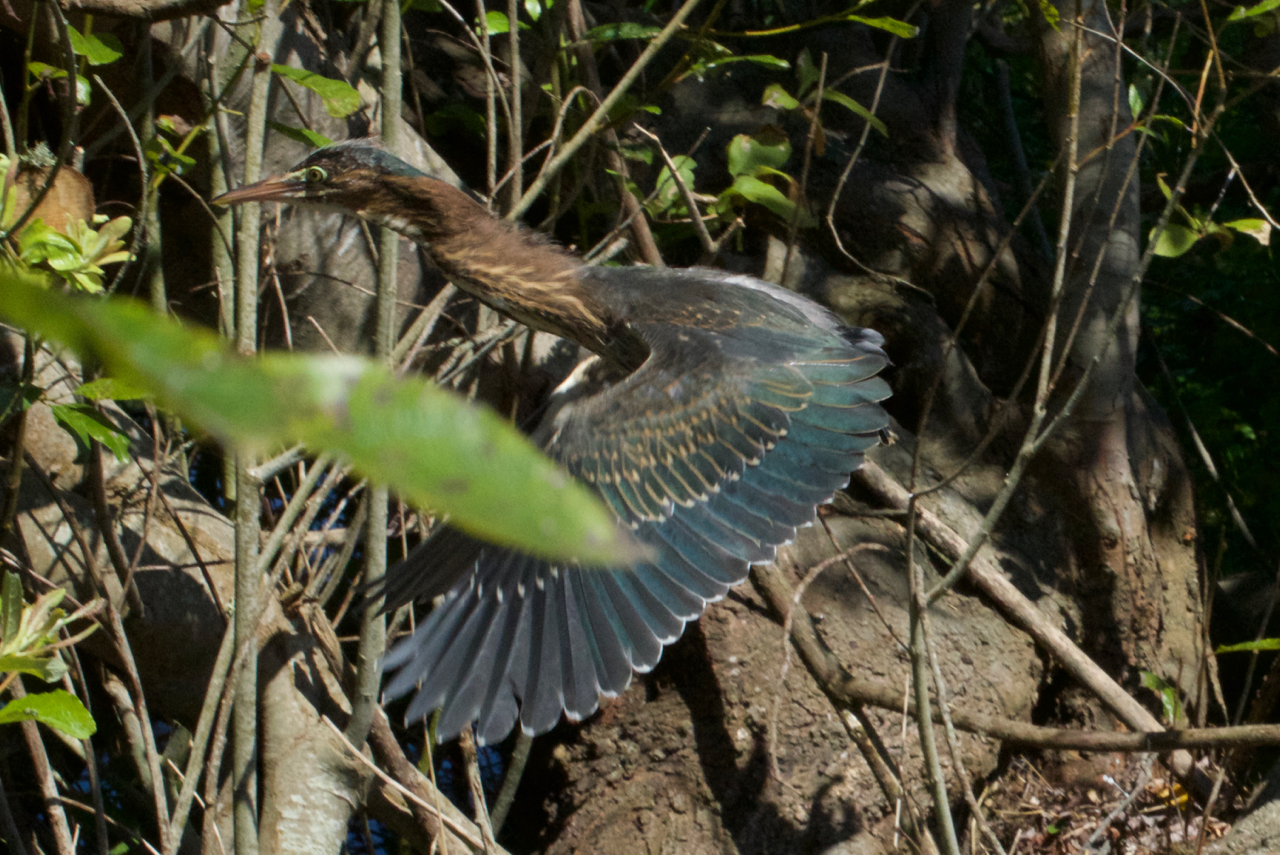
Birds gotta fly and fish gotta swim! No one knows this more than birds and fish. And when a young Green Heron (Butorides virescens) has to fly, fly they must! If it’s the first flight ever, mistakes might be made….

When we got the call that a heron was running around the intersection of 7th and F in Arcata, we quickly drove over to investigate, finding nobody. As it turns out a citizen had already captured and delivered the bird to the Arcata City Hall.
One of the hallmarks of being wild is that no permits are required to live your life. You are free to do as you wish. So there’s no real reason for a heron to visit government offices. If a wild bird does visit, chances are good that something has gone awry.
An employee of the city called to say they’d bring us the bird. While we waited, we speculated that the bird may have been hit by a car, – an obvious guess since found in traffic and not flying away. But when the heron was brought to our clinic a couple of miles away in Bayside, we saw that this bird was a young fledgling, possibly on their first sortie from the nest.


Green Herons aren’t endangered, but still they are very uncommon patient at HWCC/bax. We’ve treated 6 individuals over the last 8 years.
Unlike Great Egrets, Great Blue Herons and Black-crowned Night Herons, Green Herons are, in ornithological jargon, “secretive”. You could spend days at the marsh and never see the family of Green Herons who are just beyond your grasp.
Wetlands such as marshes and estuaries are prime habitat for these birds. As wetlands are under increasing attack, so are Green Heron populations in steep decline. Preserving their habitat is key to preserving their lives and existence.
In the case of this young bird, our first concern was getting the youngster back to their family. Less than a quarter mile from Arcata City Hall is a small wetland that seemed the likely location of the Green Heron family nest. In fact, we were informed by a reliable observer that a Green Heron nest had been active in a conifer very close to the nearby Arcata Community Center.
Within a day we had a team out looking for the family. We found the nest, but no birds were spotted. We knew that it was still likely that they were near, but without a confirmed sighting the risk was too great to simply leave the young Heron at the wetland and hope for the best. At this age, the bird would still be relying on food given by their parents.
With no family found, it would be up to us to provide the fledgling with opportunities to learn to forage as well as strengthen flight skills.

Fledgling birds are typically as big if not bigger in weight than adults, so our patient no longer needed to grow, only learn. We provided a pool with live fish fso the Heron could learn to hunt, an aviary big enough for improving flight, and perches and grasses so that the heron’s inherited desire to hide could be satisfied.
After three weeks, the young bird was eating all the fish we offered and had lost the last of the downy nestling feathers. All that was left was release.
We released the Green Heron into excellent habitat not far from the original nest site. It’s quite possible that the bird’s parents and siblings had moved here too. In either case we were certain this bird was ready to be on their own.






This young Heron was one of over 900 animals we’ve admitted for care, year to date. Your support paid for the fish the heron ate, the warmth the heron needed on the first night of care, the phone that received the call, the gasoline used to search for their family, and to transport to the release location, and our Bayside facility itself. Without any of these things, this bird wouldn’t be out there right now, wild, free, and able to survive.
2019 is a challenging year. Our caseload is up nearly 5% over last year. We’ve already admitted as many patients this year as we admitted in all of 2013. We need your help! We had a 2019 fundraising goal of $100,000 by August 31. We’re $40,000 short of that goal. We don’t expect to make up the difference, but with your help we can pay our bills from the crazy summer and prepare for the remaining months and the 300-400 more patients we are likely to admit before the year is over. Please help. Thank you!
Donate here to help injured and orphaned wild animals.

photos: Laura Corsiglia/BAX

